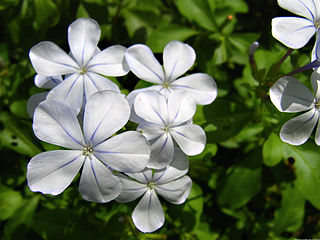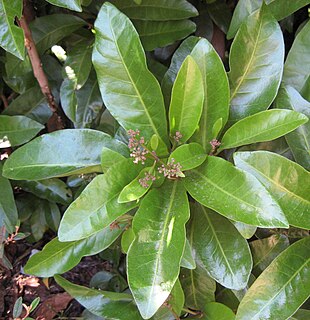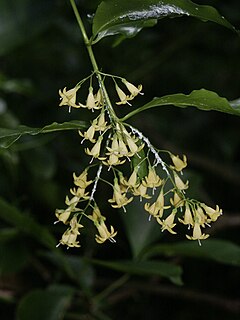
A forest is an area of land dominated by trees. Hundreds of definitions of forest are used throughout the world, incorporating factors such as tree density, tree height, land use, legal standing, and ecological function. The United Nations' Food and Agriculture Organization (FAO) defines a forest as, "Land spanning more than 0.5 hectares with trees higher than 5 meters and a canopy cover of more than 10 percent, or trees able to reach these thresholds in situ. It does not include land that is predominantly under agricultural or urban use." Using this definition, Global Forest Resources Assessment 2020 found that forests covered 4.06 billion hectares, or approximately 31 percent of the world's land area in 2020.

Forestry is the science and craft of creating, managing, planting, using, conserving and repairing forests, woodlands, and associated resources for human and environmental benefits. Forestry is practiced in plantations and natural stands. The science of forestry has elements that belong to the biological, physical, social, political and managerial sciences.

Reforestation is the natural or intentional restocking of existing forests and woodlands (forestation) that have been depleted, usually through deforestation, but also after clearcutting.
Agroecology (a-grō-ē-ˈkä-lə-jē) is an applied science that studies ecological processes applied to agricultural production systems. Bringing ecological principles to bear can suggest new management approaches in agroecosystems. The term is often used imprecisely, as the term can be used as a science, a movement, or an agricultural practice. Agroecologists study a variety of agroecosystems. The field of agroecology is not associated with any one particular method of farming, whether it be organic, regenerative, integrated, or conventional, intensive or extensive, although some use the name specifically for alternative agriculture.
Pedro Sanchez is the Director of the Agriculture & Food Security Center, Senior Research Scholar, and Director of the Millennium Villages Project at the Earth Institute at Columbia University. Sanchez was Director General of the World Agroforestry Centre (ICRAF) headquartered in Nairobi, Kenya from 1991-2001, and served as Co-chair of the UN Millennium Project Hunger Task Force. He is also Professor Emeritus of Soil Science and Forestry at North Carolina State University, and was a visiting professor at the University of California, Berkeley.
Stanford Blade is a Canadian agronomist and academic administrator. He is the dean of the faculty of Agricultural, Life and Environmental Sciences (ALES) at the University of Alberta. Blade is a fellow of the Royal Swedish Academy of Agriculture and Forestry.

Plumbago is a genus of 10–20 species of flowering plants in the family Plumbaginaceae, native to warm temperate to tropical regions of the world. Common names include plumbago and leadwort.

Pisonia is a genus of flowering plants in the four o'clock flower family, Nyctaginaceae. It was named for Dutch physician and naturalist Willem Piso (1611–1678). Certain species in this genus are known as catchbirdtrees, birdcatcher trees or birdlime trees because they catch birds. The sticky seeds are postulated to be an adaptation of some island species that ensures the dispersal of seeds between islands by attaching them to birds, and also allows the enriching of coralline sands. These island species include P. brunoniana of Australasia and Polynesia and P. umbellifera, which is widespread in the tropical Indo-Pacific region.
The following outline is provided as an overview of and guide to forestry:

Dypsis is a genus of flowering plants in the family Arecaceae. They are slender, evergreen palms with yellow flowers carried in panicles amongst the pinnate leaves. Many Dypsis species have aerial branching, a rare growth habit among palms. Some have marcescent leaves that remain attached after death and trap litter for nutrients.

The Kerala Forest Research Institute (KFRI) is an organisation based in Peechi, in Thrissur, India. It was established in 1975 by the Government of Kerala as part of its Science and Technology Department, and in 2003 became part of the Kerala State Council for Science, Technology and Environment.

Chiococca alba is a species of flowering plant in the coffee family (Rubiaceae) native to Florida and the extreme southern tip of Texas in the United States, Bermuda, Mexico, Central America, the Caribbean, the Galápagos, and tropical South America. Common names include David's milkberry, West Indian milkberry, cahinca and West Indian snowberry. The specific epithet, alba, means "white" in Latin and refers to the color of its fruits.
Arthrostylidium auriculatum is a species of Neotropical bamboo native to Central America, the West Indies, northern South America, and southern Mexico.
Arthrostylidium fimbriatum is a species of Arthrostylidium bamboo in the grass family. The species are native to Central America, the West Indies, northern South America, and southern Mexico.
Arthrostylidium fimbrinodum is a species of Arthrostylidium bamboo in the grass family. The species is native to Central America, the West Indies, northern South America, and southern Mexico.
Arthrostylidium grandifolium is a species of Arthrostylidium bamboo in the grass family. The species is native to Central America, the West Indies, northern South America, and southern Mexico.







